We coined the term EXTREME ORCHESTRATION in an attempt to capture the imagination of students whose orchestrations tended to be merely functional—inoffensive but unengaging. We suggest that this concept could be instilled as a primary motivator for all musical endeavors.
Extreme orchestration does not claim that every piece must be avant-garde or conspicuously innovative, or that all music, dynamically, should be at the threshold of audibility or pain. Unconventional ensembles are not necessarily less fascinating than commonplace ones, and the outermost instrumental registers are not always preferable to the more common, middle range. It certainly is not a decree that proselytizes the superiority of extended techniques over traditional ones, or one that shuns music written before the Twentieth Century! (In fact, it would be difficult to imagine an orchestrator more extreme than Beethoven.)
What is extreme orchestration? It is simply a challenge asking that composers and orchestrators define their goals and execute them extremely well. If your concept is to write a beautiful love ballad, make it gorgeous. Don’t be afraid to write violent passages that are primal and horrifying. If you wish to orchestrate in the style of Bach, study his scores thoroughly and aim for more than a superficial resemblance; find and emulate the details and subtleties that make his music awe- inspiring. If your aim is to orchestrate Bach’s music in an unusual way, search deep and hard to find a strategy that will allow the listener to hear Bach’s ideas in a completely fresh manner (as Webern did when he orchestrated Bach’s Musical Offering). Strive to make your music not only moderately pleasant (sad, etc.), but powerful and effective. Do not stop short of capturing the essence of your goals.
An extreme orchestrator must carefully balance two aspects of instrumentation and orchestration: craft and art. The craft of instrumentation deals with concrete issues such as instrument ranges, transpositions, registral characteristics, various performance techniques, and idiomatic devices. Orchestrational craft encompasses the ways in which instruments can be combined, how they balance with one another, transcription approaches, and a host of other concerns. In terms of craft-oriented issues, there is no need to reinvent the wheel, as there are many resources available to develop these skills. This text is a practical reference, aimed at developing techniques and strategies for dealing with such issues and concerns, but no book alone can teach you the craft of orchestration. In addition, the following are highly recommended:
Listen to Music. As often as possible. There is no better way to internalize the potential of instruments and instrumental combinations than actively listening to music.
Attend Concerts. By watching the performers and feeling the energy of shared musical communication, you should be able to re-visualize how the music comes to life as your work on your scores.
Attend Rehearsals. One of the best ways to learn about orchestration, it is possible to hear what is difficult for the ensemble and what works instantly. The kinds of concerns expressed by the conductor and how players respond to them may be observed in this setting.
Study Scores. Detailed score analysis teaches many lessons that would take volumes of books to describe, and is one of the primary methods for studying orchestration.
Piano Reductions. When available, compare piano reductions with full scores. Making piano reductions from large ensemble scores or orchestrating a reduction and comparing it against the original can teach many valuable lessons.
Work With Players. Ask performers questions about what their instruments do or don’t do well. Have them demonstrate specific techniques for you.
Have Your Music Read/Performed. No book or professor can teach you the lessons of such situations. It will quickly become apparent what worked and what didn’t (though failed passages may be the result of poor scoring from the orchestrator or poor reading from the players). If possible, record all readings, rehearsals, and performances of your works, and listen critically to them.
The art is the way in which the techniques and issues of craft are applied. All of the methods described above should also be used to engage the artistic side of the orchestrator. This text poses many artistic issues, but in the end only you can exercise your creative power.
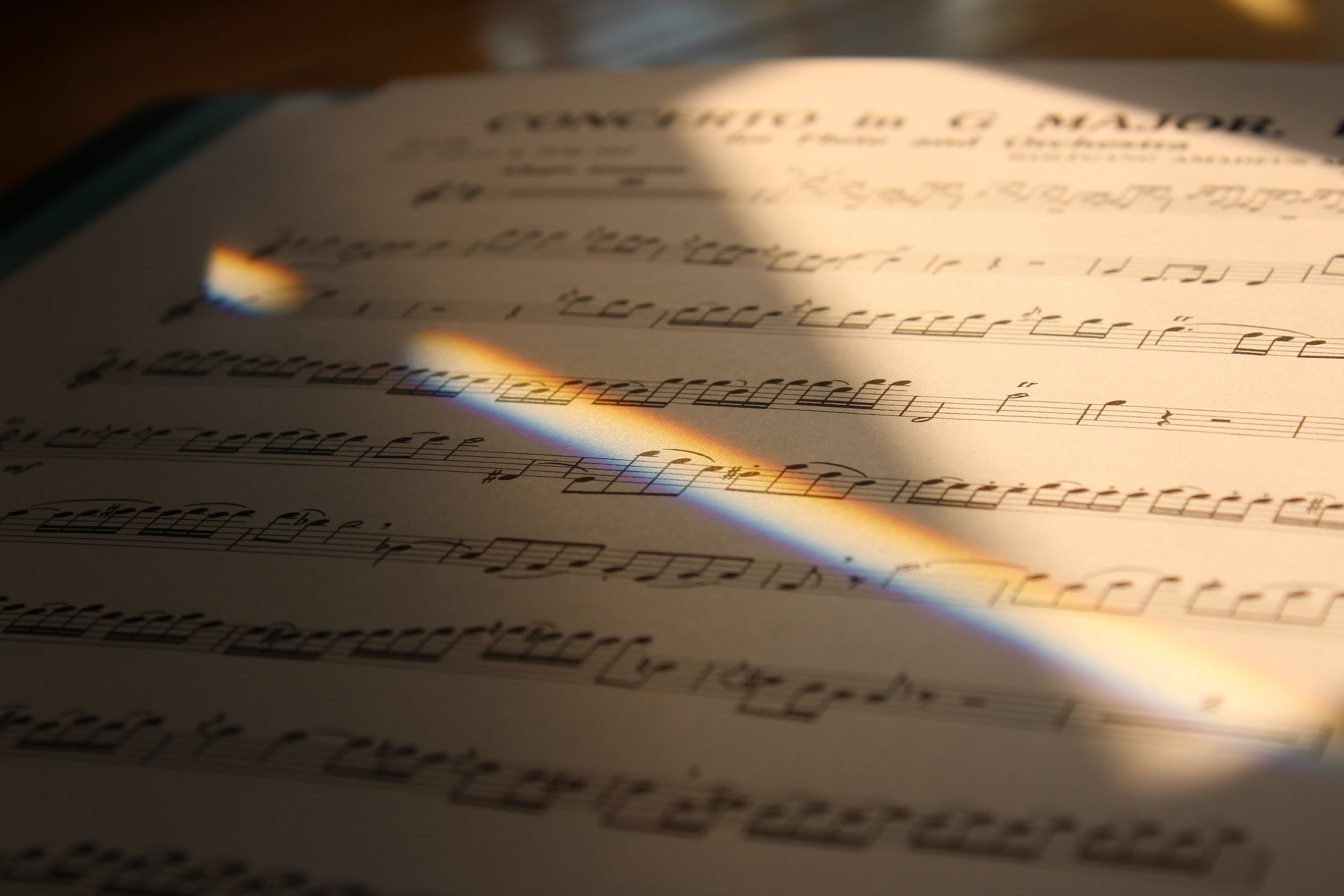
All Instruments | Effective Instrumental Writing
All composers deal with instrumentation and orchestration every time they write music. Even when composing for a solo player, it is imperative to know the potentials of the instrument at hand. Though some students of orchestration argue that they have no compositional ability, all orchestrators deal with composition.

All Instruments | Notation
Perhaps it seems odd for a book on orchestration to contain such a hefty chapter on music notation. Certainly learning the rules of notation will not teach the art of instrumentation or orchestration, as notation is a completely separate skill. Yet notation is the single item that orchestrators deliver to performers.
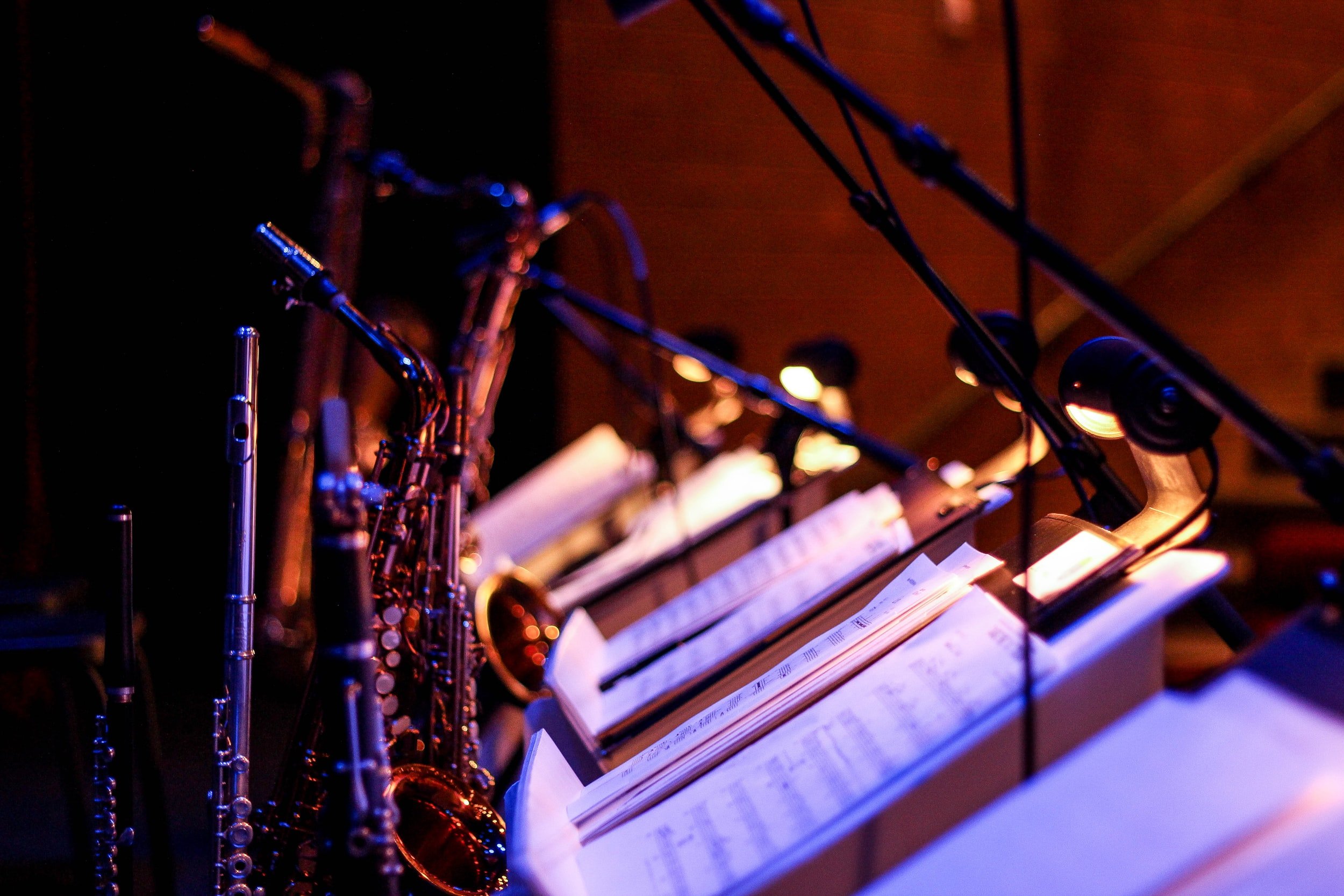
Woodwinds | Introduction
Woodwinds are not usually called upon to evoke the sensuous beauty of strings, the heroic grandeur of brass, or the visceral power and splashy color of percussion. Their role in the orchestra is possibly the most subtle and personal of all the instrumental choirs. Developing an appreciation for the special qualities they contribute and discovering techniques for making the most of the timbral resources they provide may be the most important lessons an orchestrator can learn.

Woodwinds | Scoring Excerpts
Since the members of the woodwind section have such individually distinct timbres, the choices of chord voicings, doublings and octave placements in this section have a particularly notable impact.

Woodwinds | The Flute Family
The members of the flute family are the only wind instruments that do not use a reed or buzzing lips to initiate their sound. Air is directed from the lips free of a mouthpiece. The only resistance to the airflow is the player’s embouchure, allowing the tongue and mouth to be uniquely unencumbered.

Woodwinds | The Oboe Family
The oboe’s double reed is the heart of its distinct character. Since no satisfactory way of mass-producing oboe reeds has been perfected, oboists spend a good part of their lives making and adjusting reeds. Intonation is largely a matter of fine-tuning the reed, and the quality of the reed can have a decisive impact on the color of the instrument.

Woodwinds | The Clarinet Family
Clarinets are the most prevalent of all woodwinds, despite the fact that they were the last to become standard members of the symphony orchestra, near the end of the Classical Period (saxophones are still waiting). There are many good reasons for this. Its broad range allows it to be a tenor, alto, or even coloratura soprano member of any ensemble.

Woodwinds | The Saxophone Family
The saxophone and clarinet families have many things in common. They are the only single reed families. Both have a relatively large number of instruments covering virtually the complete range of the orchestra, and these instruments are playable at the elementary level, while possessing the capacity for virtuosic technical agility and extraordinary dynamic breadth.

Woodwinds | The Bassoon Family
The bassoon family is limited to the bassoon and contrabassoon. Since these are double reed, conical bore instruments, basic acoustics might suggest that they should be included in the oboe family (or that oboes be included in the bassoon family since bassoons arguably arrived first). The sound quality of bassoons, however, differs significantly enough from the oboes to merit a family of their own.

Brass | Introduction
Brass instruments are a far more homogeneous group than woodwinds. All brass instruments produce their sound when lips are vibrated into a mouthpiece. Beyond the mouthpiece, the most important element in the structure of all brass instruments is a flaring bell at the end of the tubing, which not only amplifies the sound but also helps the higher partials to speak clearly and evenly.

Brass | Scoring
In the following excerpt, the brass section forms the core of the climax of Strauss’s Till Eulenspiegel. Here the brass is organized in a variety of configurations, ranging from contrapuntal balancing to homophonic power chords.

Brass | The Horn Family
The horn (rarely referred to as the “French horn” these days) is the most extensively used brass instrument in orchestral writing, whether measured by the number of scores which call for it, the number horns usually included in the instrumentation of a score compared to other brass instruments, or by the relative total duration of time that solo or section horns play in a score.

Brass | The Trumpet Family
The trumpet is arguably the loudest and most powerful member of the orchestra, if one excludes the organ and certain deafening percussion. A single trumpet in its middle to high register at the ƒ dynamic level can always be heard, no matter how dense and loud the texture surrounding it.

Brass | The Trombone Family
The trombone is so similar in its acoustic structure to the trumpet (predominantly cylindrical) that it may be considered a bass trumpet with a slide replacing the valves.

Brass | The Tuba Family
The tuba functions as the bass of the brass section. Comparable to the way string basses commonly double the cellos an octave lower (like adding an organ “16-foot” stop), the tuba is acoustically designed to provide depth and strength to the bass voice. Its sound is open and relatively diffuse, a “sub-woofer” to the brass and the orchestra as a whole.

Percussion | Introduction
Though percussion instruments can be pitched (such as marimba, xylophone, and timpani1) or non-pitched (such as snare drum, triangle, and cymbals) there is often a fine line between these two categories.

Percussion | Scoring
Percussion notation has the same goals as all notation: it should be clear, specific, and easy to follow. Many attempts have been made to standardize percussion notation, yet none have proven definitive. However, following the guidelines set below will allow you to deliver comprehensible, easy to read percussion parts.

Percussion | Drums
Most drums have a single head, made from a stretched membrane, affixed to a shell. Some have a second head on the opposing side (i.e. bass drum), adding resonance by creating a sound chamber between the heads.

Percussion | Mallet Percussion
Though the mallet percussion instruments range widely in material (some are wood instruments, while others are metals) and timbre, they share many common characteristics. All of these instruments are pitched and capable of playing chromatically throughout their given range. They are all set up similarly to a piano in that the pitches that correspond to white keys are pushed forward, with the black keys appropriately placed behind them.

Percussion | Other Struck Percussion
Any kind of item, even those not normally found in the percussion section, may be struck (though you may want to take out some extra insurance on particularly fragile items!). The timbre is determined primarily by its material, shape, density, and the type of mallet used.

Percussion | Non-Struck Percussion
Objects can be shaken, scraped, pulled, cranked, blown, etc. Some of these instruments imitate nature sounds (composers seem to have a particular obsession with the weather) or everyday life, while others are used simply to create rhythms, texture, or noise. With few exceptions, these instruments are non-pitched.

Keyboard | Introduction
Keyboard instruments are designed to be polyphonic, giving one performer the ability to play as many notes simultaneously as the fingers of two hands (and in some cases two hands and feet) can manage. The piano and organ have the ability to create a complete musical fabric, often suggesting the range, textural richness, and dynamic impact of a large orchestra.

Keyboard | Piano Essentials
The piano is a percussion mechanism masquerading as a sustaining, lyric instrument. Considering the tremendous amount of music written for it, thoroughly convincing in all manner of styles and characters, this masquerade is conspicuously successful.

Harp | Introduction
Despite its extreme expressiveness, harmonic potential, wide array of techniques, and the fact that it is the one of the oldest living instruments, the harp seems to strike fear in the hearts of many composers and orchestrators.

Harp | Scoring
Idiomatic Scoring for the Harp: Music for harp is usually written on a grand staff, similar to piano music. Most of the time, the top staff should be in treble clef, and the bottom staff in bass clef.
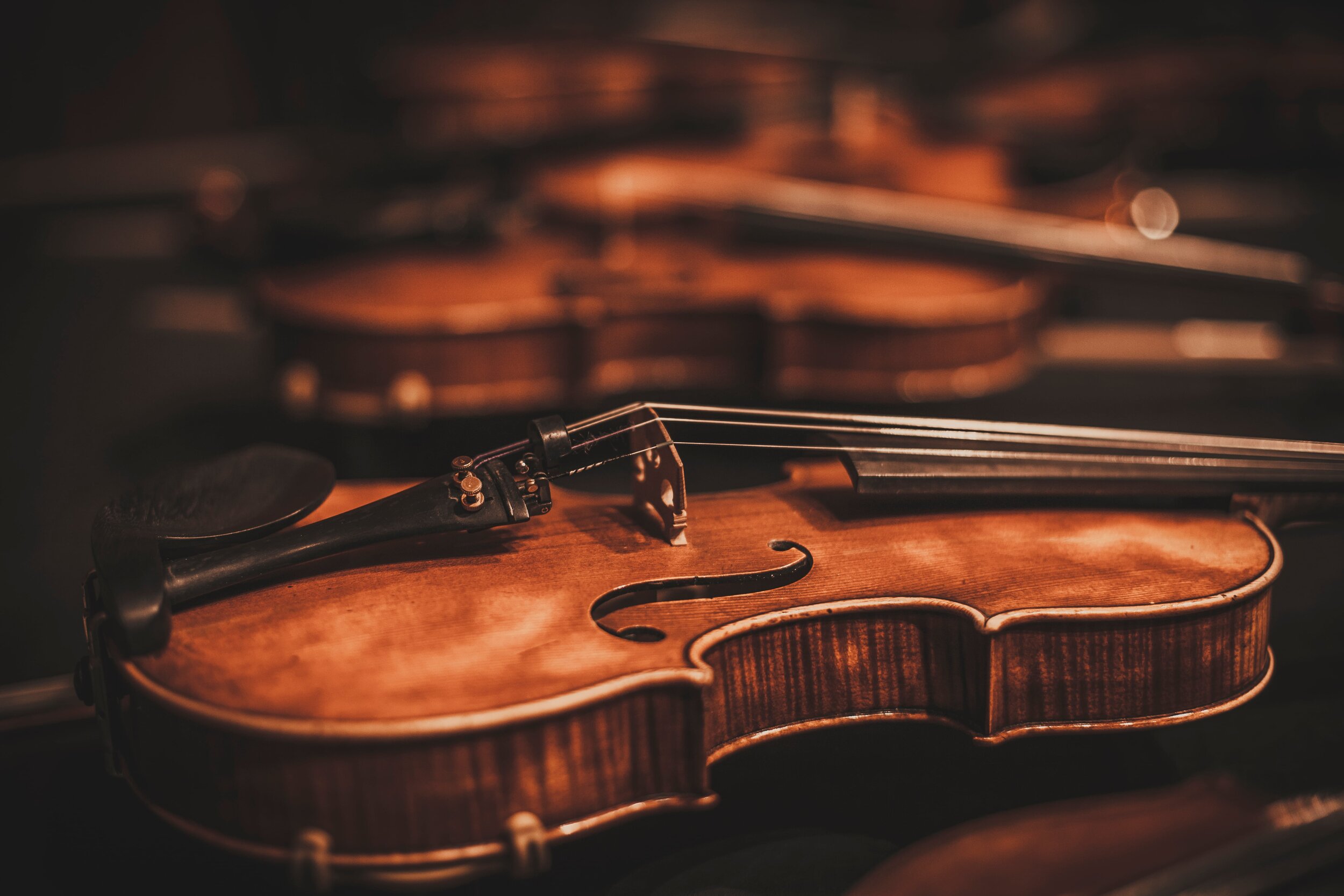
Bowed Strings | String Basics
The bowed string family of the modern symphony orchestra consists of only four instruments: violin, viola, cello, and bass. More music has been written to feature these instruments than any other family of the orchestra (woodwinds, brass, or percussion). A full string section forms the backbone of most orchestral literature.
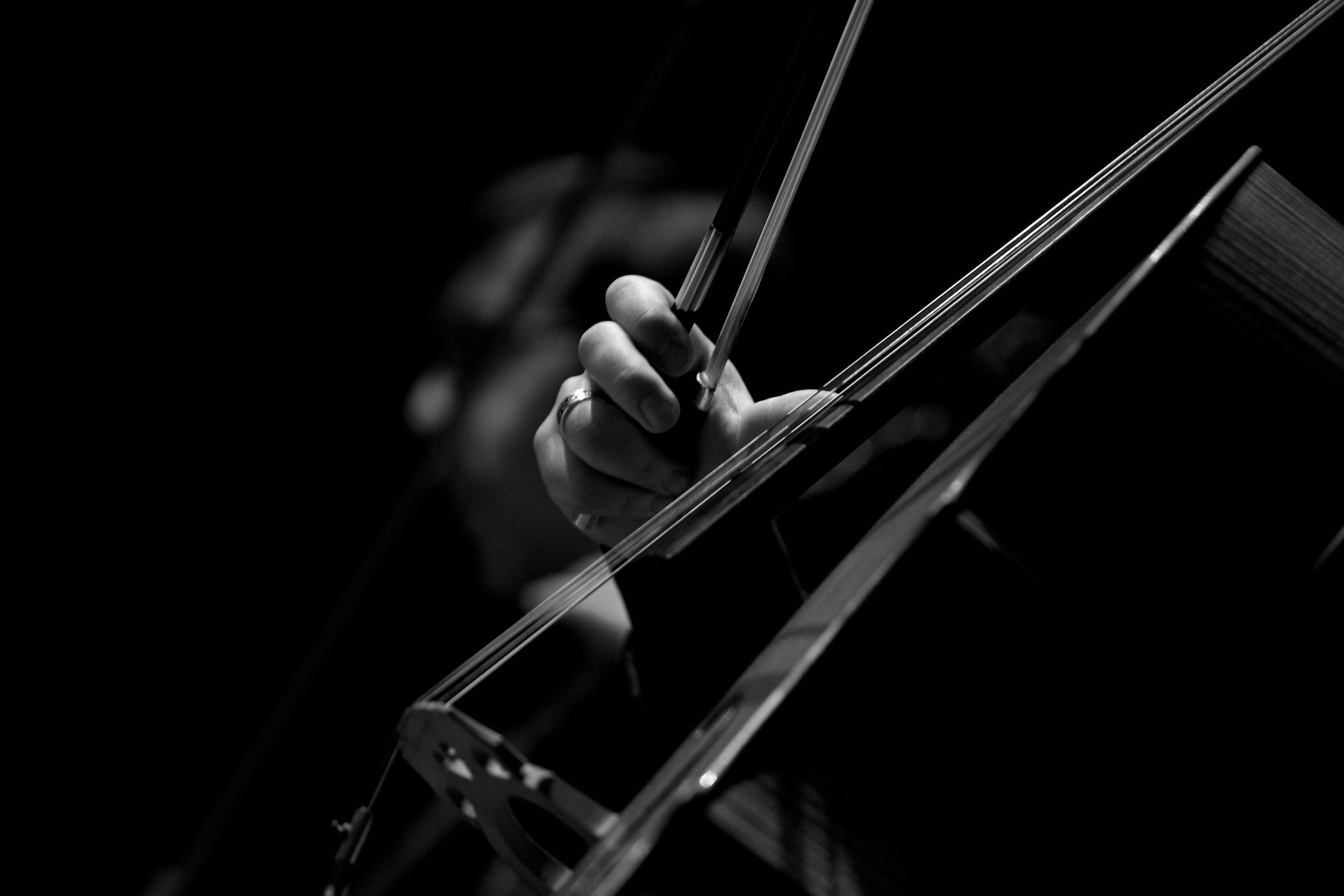
Bowed Strings | Left Hand Techniques
On string instruments, it is possible to change the pitch of a string by stopping the string with the left hand. In other words, the left hand applies pressure to a string against the fingerboard, in essence shortening its length. Shorter strings produce higher pitches, so as notes are stopped higher on the fingerboard, the pitch rises.

Bowed Strings | Right Hand Techniques
The most common way to produce a sound on orchestral string instruments is by drawing a bow across one or more of its strings. This technique is called arco. Because playing with a bow is the default method of playing these instruments, it is not necessary to write the term arco on the score unless canceling out an alternative way of playing, such as plucking or striking the strings.

Bowed Strings | Alternative Timbres
It is possible to achieve a greater variety of timbres with the bowed strings than with any other orchestral instrument. Through the use of harmonics, mutes, varied bow placement, plucking or striking the strings, and other extended techniques, a large selection of sound possibilities becomes available.

Bowed Strings | Violin
The violin generally takes the soprano role of the strings, though it is possible to score violin below viola, or even upper register cello.
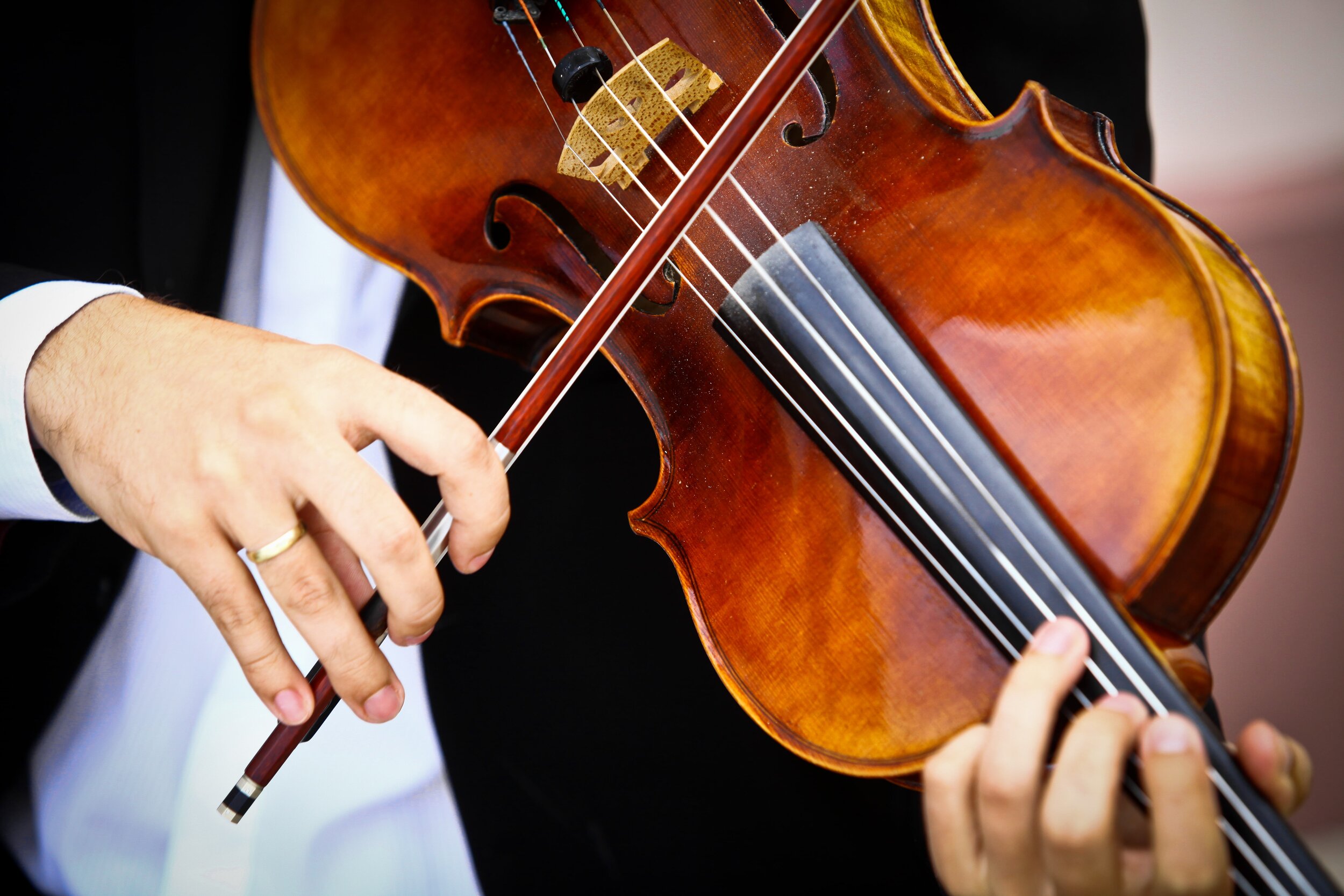
Bowed Strings | Viola
The viola is most often scored as the alto voice of the string ensemble. In fact, the word for viola in German is alto. For chordal figures, this instrument often fills out the inner voices. Viola can effectively double the violin in unison, or down an octave, and it is often written in unison or up an octave from the cello.

Bowed Strings | Cello
Although the cello often takes on the baritone or bass role of the string section, it can also function as the tenor, alto, or even soprano voice. In the lower register, it often doubles the bass or other bass instruments, such as bassoon and trombone. In the mid-range, cello can contribute inner notes of harmonic constructions.
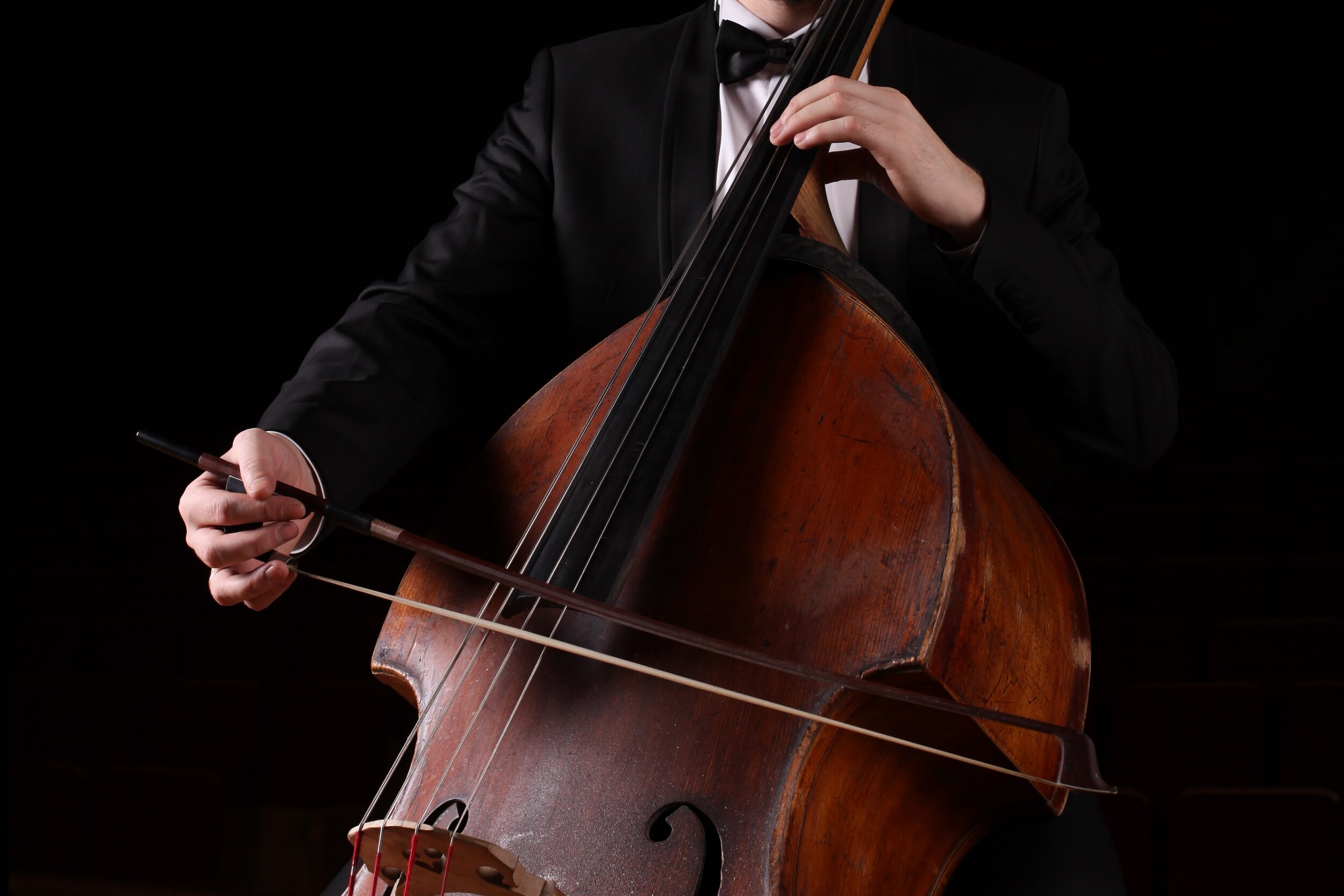
Bowed Strings | Contrabass
The contrabass is the largest and the lowest of the bowed strings. Also known as double bass, bass viol, string bass, or simply bass it is positioned in front of the player, resting on an endpin, as the performer stands or sits on a high stool. Most of the techniques for violin, viola, and cello are possible on bass as well, and this instruments blends well with the other strings.
